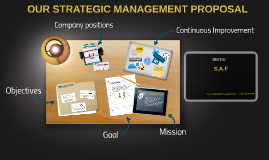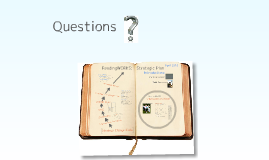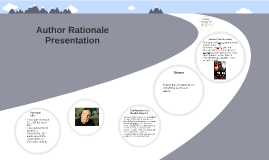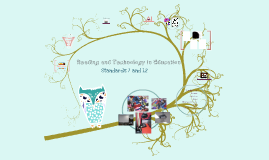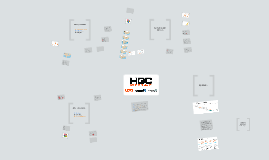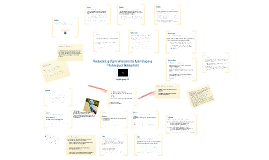2031 Strategic Template
Transcript: Combined 2016 & 17 revenues by market 2016 | at a glance 2031 | dream big Weekly BD reporting at Monday am meeting aligning strategic plan to opportunities being chased Monthly financial reporting to partners communicating financial state of HGC to owners based on strategic plan Monthly reporting at meetings communicating status of strategic plan to all employees Monthly team lead reporting tracking team lead involvement in strategic plan Quarterly Exec reporting - communicate & redefine strategy of strategic plan with execs and dept. leads Build Our People Recruiting strategy: Columbus full time hires Diversity in co-ops HGC & SSRG field re-organization Leadership Academy classes Continue & evolve mentor / apprenticeship program 2017 | forecast 2017 | forecast Built Our People HGC Timeline - thru the years Preparing people for path for growth Built Our People Built Our Culture Built Our Processes Built Financial Performance 2016 | at a glance Build Financial Performance Build Our People Build Our Processes Build Every Day Staying on Track Enhance Office Operations: PM process improvement Accounting efficiencies CRM process evolution Go/NoGo process refinement Enhance Field Quality Control: Mentor / apprenticeship program evolution Safety training & implementation Built Our Processes graph showing people vs revenue and graph showing revenue by role type (PM, SPM, etc) 2016 | revenues by market Build Our Culture Build Our People Path to $1B | revenue goals by office 2031 | dream big Target growth areas for existing HGC markets : Entertainment Healthcare Target growth areas for new HGC markets: Industrial Mixed use Target growth area for secondary HGC markets: Windows Increase National footprint: Columbus office 2016 | at a glance Strategic Template to Strategic Plan 2017 | Forecast 2017 | revenues by market Build Our Processes Recruiting strategy: 3,000 FTE diverse, international candidates Be the "go to" company for co-ops Create an environment that provides meaning, career growth, empowerment for current and future employees Evolve apprenticeship program into professional series Questions, comments, next steps... Up Next... graph showing projected people vs revenue in 2017 Office re-organization (Market Leaders, Definition of markets & services) Began apprenticeship program - masonry Paid skills training - carpentry Professional Development series with Tommie Lewis Focused recruitment (industrial expertise (Brickett), national account expertise (Hothem), traveling supers) New PTO plan Additional members to Executive Team Build Cool Sh*t across state lines and country borders Maintain reputation as respected contractor National / Global community outreach involvement HGC expansion: Increase footprint (national & international presence Self-perform in new locations - strong field presence Acquisitions / mergers Growth into new service markets Growth of niche / specialized markets 2017 revenues by market (forecasted) Our Path to 2031 100 Years Build Our People Build Every Day Enhance Operations: Innovation Lab (3D printing/scanning, robotics, automation, modularization) Increase service offerings (Design/Engineering services, expand Project Delivery offerings, etc) Enhance Field Quality Control: Incorporate latest IT advancements (ie. self-healing building materials) Build upon reputation as a leader in safety Build Financial Performance Grow existing markets: entertainment, healthcare, industrial/manufacturing, multi-family Grow into new markets: data centers/IT advances, power, international TBD Secondary market growth: additional niche market segments Increase footprint: multiple offices (national and international presence) Built Our Culture HGC Construction Revenue $84.5M Annual Growth 2010-2016 18% SSRG Revenue $20.5M Annual Growth 2010-2016 26% Stanton Revenue $3.5M Annual Growth 2010-2016 26% Blueprint for consistent Operations: Playbook refinement Preconstruction Department created Software integration: Procore, Cosential, On-Screen, Enterface Technology integration: iPad roll out New Websites Build Our Processes 2031 | dream big Consistency in how we do things, wherever we are 2016 | at a glance Who? Obtain input from all departments to finalize the strategic plan for future growth & success Why? Preparing for long-term growth that fits the vision of HGC How? Focus on growing in a smart & sustainable way so we preserve our culture and maintain our reputation for quality, integrity, and innovation What? Define metrics of what we measure to ensure we're on the right path to meet our vision Blueprint for our Culture booklet Formed the Culture Committee Sports, internal outings, significant events, education Health & wellness, community engagement Improvements to HGC Campus - accounting area & SSRG space - courtyard - HR suite - fitness room - property acquisition Built Financial Performance Build Our People 2016 | at a glance Build Financial Performance Build culture & communication across field /






